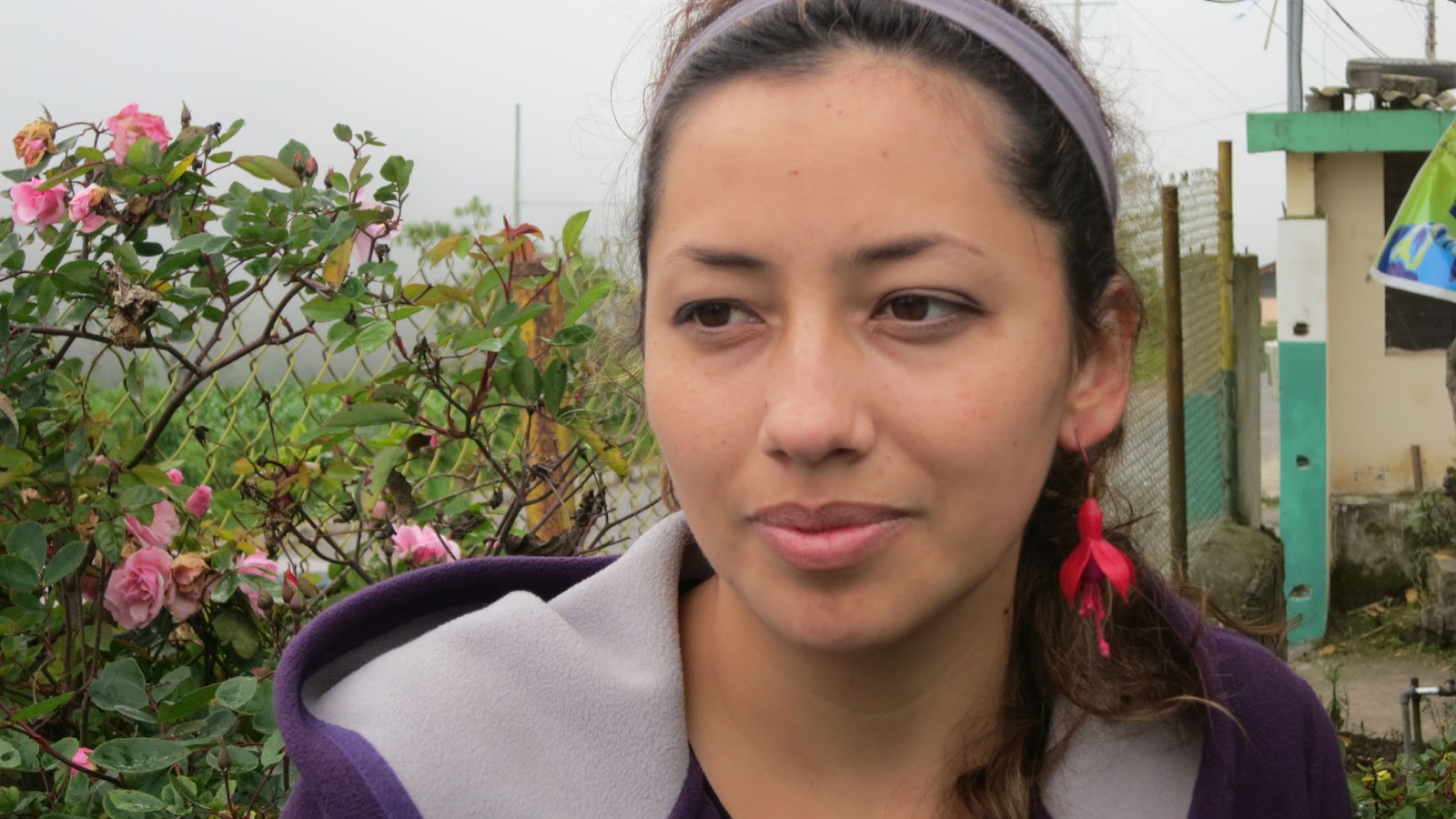Saturday, February 23, 2013
Believe
it or not, Wednesday was our last day volunteering with UBECI! On the
one hand, our first night in Ecuador seems like ages ago. On the other,
the past three weeks have flown by. Our mornings in the markets and
afternoons learning Spanish certainly demanded concentration and energy.
We worked at these tasks diligently, and I was almost surprised at how
tiring is was by the end of our commitment there. That notion of getting
out of something what you put into it directly applies in our case, as
our efforts rewarded us with a sense of accomplishment. We actually
helped lots of children to learn and grow, even though three weeks is
really just a drop in their buckets. They most likely won't remember us
for much longer. However, they enriched our lives more than they know,
and we will remember them for a very long time. We feel privileged to
have joined their paths even for just a little while.
Sadly, the end of our
Quito time also meant saying good-bye to our lovely host family:
Orlando, Marlene and their daughter Anita. We will miss Marlene's
delicious cooking, Orlando's sense of humor and Anita's English skills.
Fortunately, after this week's trip, we will see them again for one
night before we head northeast. We are grateful for their warm
hospitality.
Our next commitment will
take us to Otavalo, which lies on our horizon. To prepare for this, and
to shake off the city life in Quito, we are presently relaxing at a
beautiful country holsteria called Papa Gayo. This lovely estate is
located about half an hour's drive south of Quito, near the volcano
Cotopaxi. They have farm animals, walking trails, bikes for rent, and
even a jacuzzi. Out here it smells of soil, rain and greenery, just what
I'd been craving after three weeks in the noisy and polluted city.
 Another feature of this
haven is their selection of day trips to fantastic places. Yesterday
(our first full day here), we took a trip to Quilotoa, which is a lake
in the crater of a volcano. The two-hour van ride proved to be a
fascinating part of the trip as we headed steadily upwards into the
mountains. Breathtaking vistas surrounded us, punctuated by glimpses of
the local daily life: women wearing vividly colored traditional
clothing, children playing or herding sheep along the road, men
constructing the new highway. We didn't even get impatient waiting an
hour for the road to reopen at the construction site. The scenery held
our attention, and we enjoyed chatting with our guide, Cristian, and
another tourist named Letitia, who accompanied us on this journey.
Another feature of this
haven is their selection of day trips to fantastic places. Yesterday
(our first full day here), we took a trip to Quilotoa, which is a lake
in the crater of a volcano. The two-hour van ride proved to be a
fascinating part of the trip as we headed steadily upwards into the
mountains. Breathtaking vistas surrounded us, punctuated by glimpses of
the local daily life: women wearing vividly colored traditional
clothing, children playing or herding sheep along the road, men
constructing the new highway. We didn't even get impatient waiting an
hour for the road to reopen at the construction site. The scenery held
our attention, and we enjoyed chatting with our guide, Cristian, and
another tourist named Letitia, who accompanied us on this journey.  |
| Clouds drift in and out of the caldera like dry ice on a stage. |
 |
| Emma studies geology at the Cañon del Rio Toachi |
The next day was more
laid-back. Emma chose to do the horseback riding excursion in the
morning, and two other American guests joined her. The owner of Papa
Gayo, Hilan, led this trip, which we had thought would last two hours.
As they were all leaving the driveway, I asked an employee about what
time they would return. He said "in four hours". OK then! Good thing
Hilan gave them each a bottle of water.
It was a beautiful sunny
morning, so Mike and I decided to take a walk up the cobbled road. We
passed big fields with lots of cows grazing, railroad tracks with a
surprising bus/train hybrid that whizzed by, and a gigantic greenhouse
operation growing roses of all colors. The property spanned both sides
of the road, and seemed to go on forever. We've learned that these
flowers are mostly grown for export to the United States and Canada, and
as many of you know, they can cost upwards of $45.00 per dozen at home.
Here, you can buy a dozen roses for $2.00 (yes, really).This year was
the cheapest ever Valentine's Day for Mike! And those flowers were
gorgeous. I believe I appreciated them even more, in fact.
After returning to the
hosteria, Mike and I enjoyed a couple of hours relaxing on the patio. I
must admit that my legs did rebel a bit, after making them do the
Quilotoa hike and then our 3-mile walk that morning. We had tea and juice, and I
actually spent quite some time sketching our view from the patio. I
hadn't sketched anything for years, and I really enjoyed getting back
into it. I've promised myself to make more sketches while we're here.
Seems like we have a bit more time now to pursue activities that fall by
the wayside at home.
Emma and the other
riders finally made it back to the inn around 3:00 pm. She loved the
trip, getting a chance to ride up and down hills, canter, and gallop a
bit when some dogs started chasing their group! Her legs were worse off
than mine, as she hadn't ridden a horse for a year, and had never
ridden that long at one time before. But the two days of sore muscles
were worth it for her. Quite a memorable day in that respect.
























































